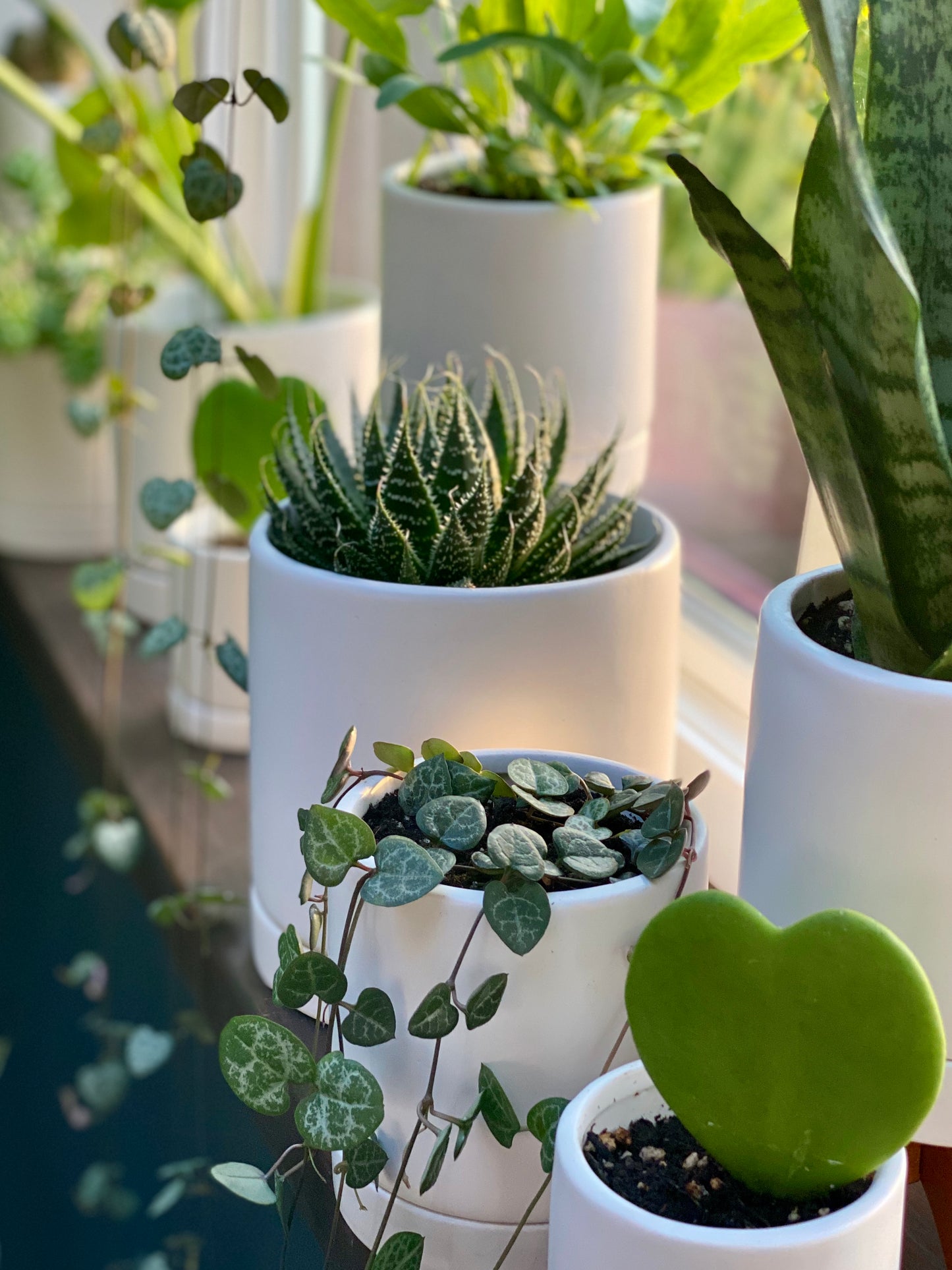
Is there an ideal time and method to bring your indoor garden to the great outdoors? Yes!
Treating your green friends to some fresh air and sunshine seems like a good idea, and it can be, if done carefully!
Here are three things we suggest you consider before carrying your green babies outside to enjoy the elements.
1. Timing
They best time to bring your houseplants outdoors depends on the houseplant. In general, once the nighttime temps are consistently above 50º fahrenheit (10º celsius) you can begin to give your indoor garden a breath of fresh air. After many years of experience caring for plants indoors and out, I've come to mentally divide houseplants into three basic groups: delicate, tolerant, and hardy.
Tropicals are delicate. Tropical and subtropical houseplants like bird of paradise, monstera, philodendron, fern, palm, spider, alocasia, calathea, anthurium, bromeliad, dieffenbachia, ficus, cordyline, money tree, staghorn fern, and orchids are houseplants that respond poorly if brought out too early. Just imagine their natural environment of lush, balmy landscapes filled with singing birds, buzzing cicadas and chirping frogs, and then imagine needing a puffy coat. Doesn't quite work, does it?

Succulents are more tolerant. I consider succulents as falling somewhere between tropicals and cactus when it comes to temperature hardiness. If allowed time to adjust, say over the period of a few weeks to a month, succulents can handle occasional night time temps that dip into the high 30's and flourish in daytime temps between 75-90º fahrenheit (23-32º celcius). Succulent houseplants (or succulent types) that I place into this category are: sedum, echeveria, jade, kalancho, aloe, peperomia, senecio, money plant (pilea), christmas/easter/thanksgiving cactus, mother of thousands, hoya, haworthia, rhipsalis, lithops, pachyphytum (moonstones), star cactus (astrophytum) gasteria, epiphyllum and pickle plant, to name just a few!
Did you know? Succulents like burro’s tail sedum and pachyphytum have a natural chalky coating called Epicuticular wax (or farina), a naturally occuring silver/white/blue film on the leaves that act as sunblock and control hydration. It's best to not handle these leaves whenever possible to allow the extra layer of protection to keep leaves free of sunburn.

Cactus are hardy(ish). When it comes to temperature extremes, these houseplants are the toughest! They are the first to go outside in the early spring, and the last to come inside when the fall chill sets in. Although NOT technically cactus, I consider these houseplants among my hardiest: euphorbia, sempervivium (hens and chicks), agave, and yucca. Then we have the true cactus types like: opuntia (prickly pear), barrel, old man, rattail, pincushion, chin, saguaro, old lady, ball, beaver tail, pincushion...to name just a few! So what makes them so tough? Think of desert cactus thriving in that dry, often windy landscape where temps can soar from 25º in the predawn morning, to 100º by late afternoon. Now that's impressive! I have an agave ovatifolia and a beaked yucca in my front yard here in Portland Oregon and both have survived weeks under a blanket of snow and ice!

2. Plant Placement
This step is key to healthy houseplants outdoors. Although it's tempting to place them where they may look pretty, (maybe you have a lovely outdoor patio or deck that is just calling out for a palm or monstera) but first please take a moment to assess your light conditions! We want to keep your green babies looking AND feeling pretty throughout season so they can go back indoors with new growth and vibrance, not like they've spent too much time at the beach!
Tropicals want mostly shade but will handle the less intense morning or late day sunlight too. Why? Consider the tree canopy they generally grow beneath, those towering palm, banyan, breadfruit, banana, mangrove, pine, eucalyptus, and giant bird of paradise trees provide an umbrella from direct sunlight. I encourage you to mimic that type of environment for your tropical types while they soak up a summertime glow.
When we think of succulents and cacti we think SUN lovers, right? Well, too much of a good thing is, well...not a good thing. For most succulents, 1-3 hours of direct sunlight is all they need, and cactus can handle between 2-4 hours, but exposure to full, direct sunlight can burn them and sunburned plants are scared for life. While the plant itself can and will come back with care, those leaves will never recover. When the leaf tissue is exposed to high-intensity light or UV rays the damage is irreversible. In succulents at least you can get a small warning before it's too late! Look for leaves turning pale yellow or white, these are about to be sunburned and toasty! Move your plant to a shady location and water it immediately to prevent dehydration that will further stress it out. Give it a few weeks to green up again and slowly introduce it to more sunlight.
3. Hydration
Indoors we rarely experience the same air circulation conditions that naturally occur outdoors during the warmer summer months (unless your fans are on full blast). The weather from late spring to early fall tends to be much warmer and drier outside than indoors, so your plants will need more water and nutrients more often. We recommend feeding your plants during this growing season too! Our Sacred Soil Tonic provides all kinds of plant powered nourishment and the boost of energy your plant needs. You can add our concentrated tonic to your watering routine every few weeks for optimal growth during this time. During the fall, when temps drop again, before bringing your plants back indoors, be sure to apply our Sacred Leaf Tonic to all the surfaces of your plants, including the pots and topsoil! This aids in preventing any unwanted pests from hitching a ride inside. You can grab the Sacred Plant Care Tonics here.
We'll be sure to create a detailed, step by step blog post to guide you through our best practices for returning plants to their indoor home as summer nears an end. Until then, we wish you all the best for a vibrant summer!
Sending out the love,
Be well,
Karina and the SE Team
